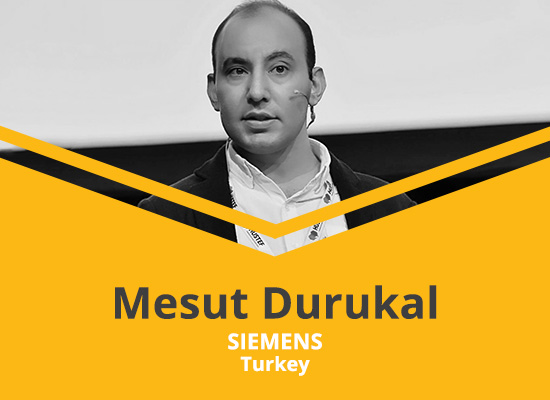DevOps Pro Europe 2020

March 24-26

Online


Biography
Mesut Durukal is QA & Test Automation Manager at Siemens.
He has a BSc & MSc degree from Boğaziçi University Electrical & Electronic Engineering. He has a 7 years’ experience in Defense Industry, working in Multilocation projects serving as the Manager of Verification & Validation activities. He has then been working in Agile Software Testing projects for 3 years. He is acting as a Product Owner & E2E Test Automation Leader for the QA team.
His expertise includes:
– Project Management
– Agile Methodologies: Scrum Framework
– Software Testing: Test automation in Java & SW testing frameworks
– Cloud Testing (SAP, AWS)
– CI/CD
– API testing frameworks: SOAP & Restful Web Services Testing
– ISTQB & CMMI


Biography
Buse Ozarslan is currently working in MindSphere Project which is the cloud-based, open IoT operating system from Siemens. She is responsible for:
Test design & review – XRay Test Management for Jira
Test automation & execution – Java, Selenium, Rest API, TestNG, Jenkins, GitLab
Development of test framework – Java, RESTful Web Services
She is also involved in test monitoring and control activities – XRay and working as the Scrum Master of a QA team – Jira.
She is working as the quality manager of QA teams:
Measuring and controlling code quality – SonarQube, SonarLint
Measuring and monitoring test metrics – Jira, XRay
Talk
How to Ensure Testing Robustness in Microservice Architectures and Cope with Test Smells
This presentation describes the most common test smells and some methods used to prevent them. These methods are applied in the test of a big project and results are presented.
It starts by pointing out the importance of test automation and costs resulted by the ignorance of QA. It is also described that automation is needed but has several difficulties like inconsistent results. This is followed by reasons of those results, definition of test smells and taxonomy of test smell types with a description of each smell.
The second part briefly investigates a real system, providing examples of conditions. For this work; SUT is a cloud-based open IoT operating system, which consists of microservices. The product has been developed by more than 600 people in 10 globally distributed countries.
Finally, a list of workarounds for test smells is proposed and advantages are analyzed by investigating the results: Polling Mechanisms, Helper Classes: Reusable simpler code, Clean Up, Annotations, Tools, Test History, Additional Executions, Test Data, Static Analysis
Objectives of the presentation:
a) To present the most common smells
b) To present a set of mitigating actions for those smells within the scope of automated testing of microservices
c) To provide empirical information supporting (b)
This talk is of importance in terms of real-life experiences. Instead of theoretical claims, faced challenges and applied solutions are told with experiences. Effects of solutions are analyzed with before-after situations. Graphical representations and evidences will be covered to understand the results. Instead of what to do, it tells how to do.
Proposed approaches can be applied by any organization by adapting according to the related work to achieve time and cost reduction. Key learnings are:
• How to reduce test smells.
• How to reduce flaky results and maintenance efforts.
• How to detect bugs in early stages.
• How to increase test coverage.
• How to improve rapid automation and adaptation
Session Keywords
